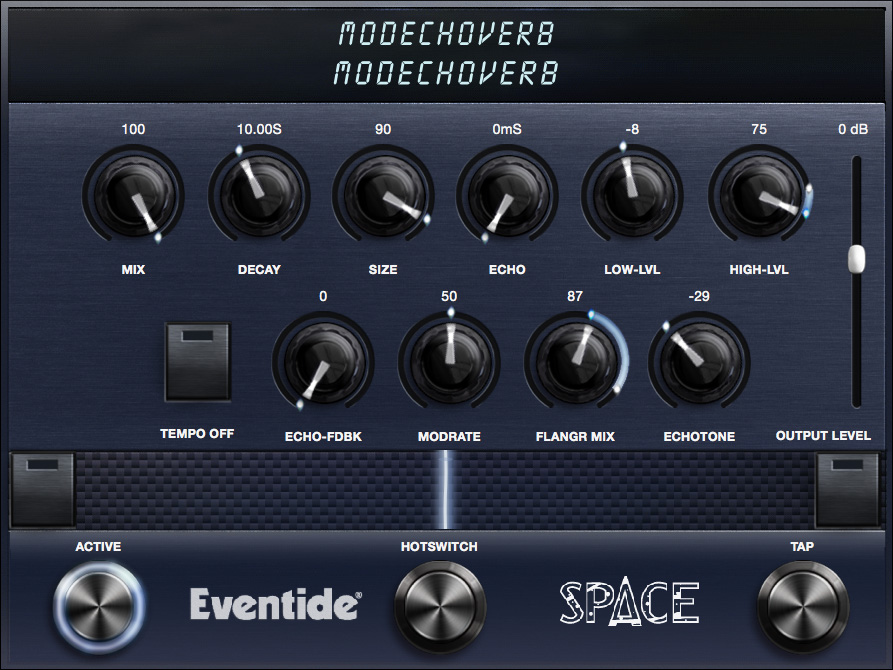Jean-Luc Ponty has inspired generations of string players to explore and expand beyond their traditional expectations. Ponty’s music is an organic combination of virtuosity and musicality coupled with his innovative integration of technology. His albums have topped the Billboard jazz charts and he’s notably collaborated with Frank Zappa and The Mothers of Invention, The Mahavishnu Orchestra, the legendary “Violin Summit” (with jazz violinists Stephane Grappelli, Stuff Smith and Svend Asmussen) and “The Rite of Strings,” with Stanley Clarke and Al Di Meola. In this Blog Takeover, he shares why he started working with electronics processing, the gear he’s used (and currently uses) and how he employs it in his music.

When I started playing in a jazz band with drums, I immediately realized that my violin needed amplification. Playing in front a mic on a boom stand simply didn’t cut it. This was in the early 60s, no electric violins yet, and a limited choice of pickups to put on top of the instrument. I got a De Armont and bought a Gemini 1 guitar tube amp by Ampeg which gave me a big warm sound yet I realized I would never be able reproduce a traditional violin sound.
When I was in Los Angeles in the late 60s, Barcus-Berry gave me their first electro-acoustic violin, which gave the volume needed to play with a loud electric band and with a very low risk of feedback, but I was not so happy with the straight electric sound. So when the first small size sound effect devices came out in the early 70s I got excited because I could then transform my violin sound into something else, making it sort of a new instrument, a total departure from the traditional sound, more adapted to modern styles of music, jazz, rock etc.
The first effect I got was a Maestro phase shifter, with 3 different speeds, switching speeds gave a similar effect to what the Hammond organ did with the Leslie, either speeding up or slowing down the vibrato effect while playing. I also got an Echoplex, which inspired me to improvise solo pieces using its delay effect. The Echoplex was basically a tape machine. It had a loop of magnetic tape and it recorded while you played and you could adjust the playback so it would affect the tempo of the delay. Fantastic until the tape would fall off like it did once on the road – what a mess and quite an ordeal to spool it back on…LOL

I also got the first Morley pedal which had multi functions such as volume, wah-wah and a boost that gave a distortion effect. I used the Maestro phase shifter, Morley pedal and Echoplex in the 2 albums I recorded with the Mahavishnu Orchestra in 1974 and my first solo album for Atlantic in 1975 called ‘Upon The Wings of Music’.
Then soon after came the MXR phase shifters, first the small footswitch which I used on tour and on my next albums Aurora, Imaginary Voyage and Enigmatic Ocean. Then in 1978 I got the Mutron Bi-Phase which was quite sophisticated with various controls over different effects such as phasing, flanging, and swept harmonics. I also got 2 delays, each as a 1 rack unit, I forgot the brand, perhaps still MXR, still all analog, I was using one to do a short background sequence as a loop and the second one to improvise lines with delay effects over the loop. The combination of the Bi-Phase and delays plus a voltage pedal that changed the pitch as a sliding effect while moving the pedal up and down all inspired me to do a violin solo with effects entitled ’No Strings Attached’, which is in my Live album from 1978 also on Atlantic.
In the 80s when I was recording new studio albums I started using studio quality effects such as Eventide Harmonizer®, reverb, phaser, flanger etc. rather than what I used on the road.
When Zeta came up with their first solid body violin and gave me a prototype in 1984, I felt I finally got a good modern sound with just the straight sound without needing so much effect all the time. I then started using effects more sporadically instead of as an integral part of the sound. Zeta also made a preamp and an octaver with 2 separate lower octaves triggered by a footswitch. They also made the first MIDI violin with an interface, which I used in 1987 in the album The Gift of Time on Columbia. It could be connected to any synthesizer and I liked using a flute sound in addition to the violin sound.
Through the 1990s and 2000s I have done projects that lead me back to the more traditional violin sound but still with a modern touch. Then in 2016, I heard an album by Martha Mooke and was impressed by the quality of the effects used. This is how I discovered the H9, which is now my main effect unit both on touring and in the studio.

Jean-Luc Ponty’s collection of electric violins. From left to right: 5-string Barcus-Berry 1980 / Barytone by Barcus-Berry 1969 / 6-string Violectra (UK) 1997 / white Zeta prototype 1984 / blue “Jazz” Zeta 1988 / black Zeta 1990 / “Jean Luc Ponty” Signature Series Zeta 2002

I use the H9 not only for its superior quality of basic effects like reverb, chorus etc. but also for numerous other types of effects. I particularly love ModEchoVerb and Blackhole from SPACE. It’s also so easy to create your custom effect with the H9 Control app. ModEchoVerb has inspired me to improvise a violin solo in my live performances, with the same excitement as when I discovered the first effects in the 70s!

Links
https://www.ponty.com/
Jean-Luc Ponty Spotify page
Jean-Luc Ponty’s YouTube Channel
Martha Mooke’s “No Ordinary Window”


